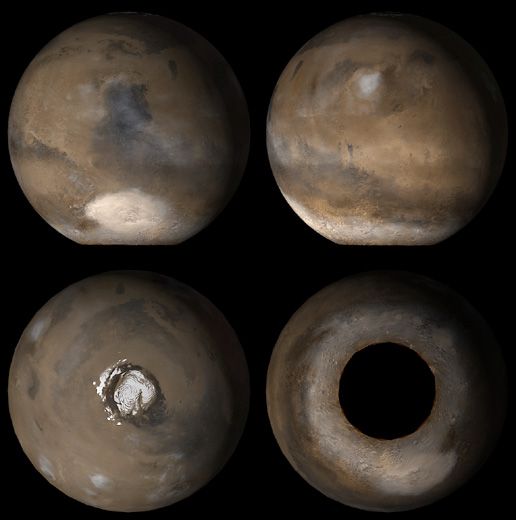MGS, R.I.P.
A round of applause for one of the most productive planetary missions ever.
/https://tf-cmsv2-smithsonianmag-media.s3.amazonaws.com/filer/MOC-nov13-631-jan07.jpg)
The last radio signal from the NASA will regain contact. Prior to its sudden disappearance, some of my colleagues had suggested that perhaps it was time to shut MGS down anyway. After all, the recently arrived Mars Reconnaissance Orbiter is now returning images and other data that in many ways surpasses those from MGS. But spacecraft in Mars orbit are extremely valuable, and the cost of maintaining one that’s already there is far less than the cost of building and launching a new one.
Having returned more than 230,000 images, MGS has been a true workhorse. Disappointing as it is to think it may actually be gone, planetary scientists should take this opportunity to stand up and applaud the people who made it one of the most successful space missions in the history of planetary study.
In 1987 I was a graduate student at Arizona State University when two of my professors were selected to build instruments for an ambitious NASA spacecraft known as Mars Observer. The instruments included the Mars Observer Camera, then the highest resolution imaging system ever flown to another planet, and the Phil Christensen, who was responsible for building the spectrometer. Phil was literally wallpapering the halls with computer printouts. Why was he doing that?
"This printout describes everything that needs to happen before we begin to get data back from TES," he told me.
It was frightening! The printouts went from floor to ceiling, and taped side-by-side they stretched some 25 feet down the hallway. Here, in dot matrix type, was a detailed list of all the meetings, important tests and hundreds of firm deadlines that lay ahead. The final line at the very bottom said something like "FIRST DATA RETURNED."
The Mars Observer was launched in 1992, but never reached its destination—the spacecraft went silent a mere three days before it was scheduled to reach Mars. The unlucky scientists had gotten to the last few lines on the computer printout, only to come up empty. Fortunately, some of them were given a second chance when NASA decided to re-fly many of the same instruments on a new spacecraft called Mars Global Surveyor.
This time everything worked, and MGS went into orbit on September 11, 1997, with a goal to observe Mars through the course of one entire Martian year (687 days). It successfully returned our first detailed maps of Martian surface topography, magnetic fields, and mineralogy. It also returned thousands of high-resolution images. And it kept on going. In the decade that followed, all the computer printouts needed to support MGS and its instruments would stretch to hundreds of miles long, representing countless hours of work. Running MGS was not a 9 to 5 job. Spacecraft do not sleep, and have to be nurtured 24 hours a day, 7 days a week, with every step thought out carefully in advance.
It’s no overstatement to say that from all this work came a revolution in our understanding of Mars. The instruments on MGS provided evidence that early Mars was very much like the early Earth, increasing the likelihood that we may find precursors to life. Also, as demonstrated by a paper just published by Mike Malin and others working with the Mars Observer camera claiming evidence for recent impact craters and flowing water, MGS has opened our eyes to how dynamic Mars still is today.
Sometime in the next hundred years or so, the Global Surveyor’s orbit will decay and it will spiral through the Martian atmosphere, scattering bits of transistors and instruments across the surface. It is unlikely that any of us will still be alive when it finally becomes part of the planet it helped explore. My friend Becky Williams at the Planetary Science Institute planned thousands of the images taken by the MGS. She told me recently, "I feel very sad, as I feel very attached to that mission."
Me, too. I say goodbye to a spacecraft that was part of my youth. And to all those who dedicated their lives to making it work so successfully for so long, you have my heartfelt thanks.
Posted December 6, 2006.
Bob Craddock is a geologist with the National Air and Space Museum's Center for Earth and Planetary Studies.
